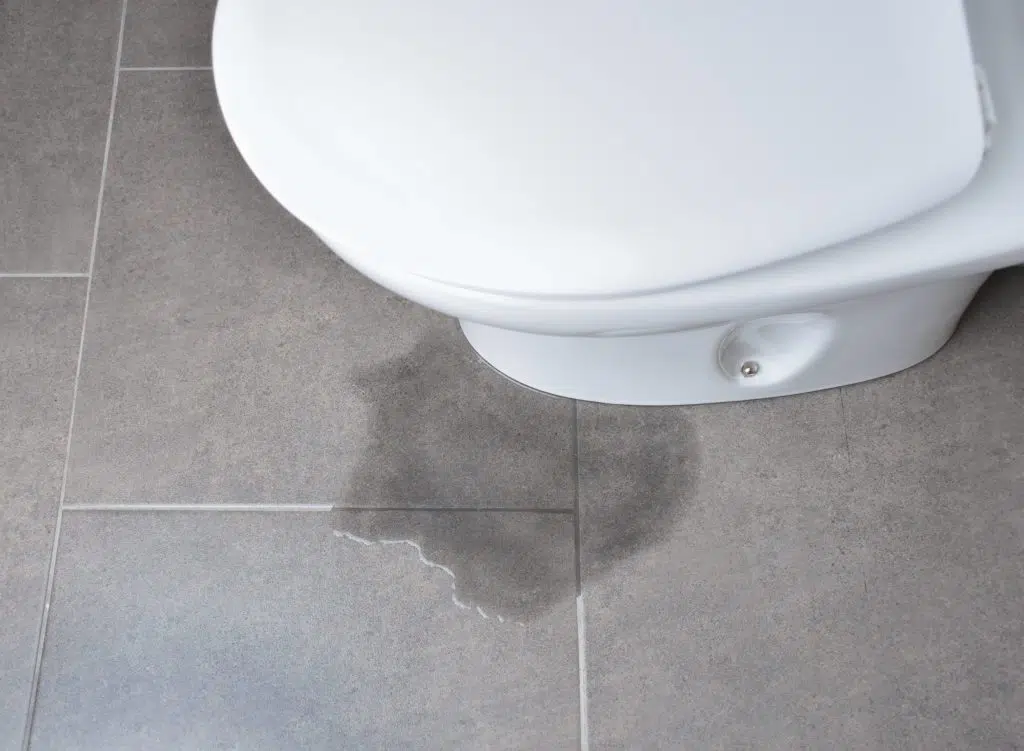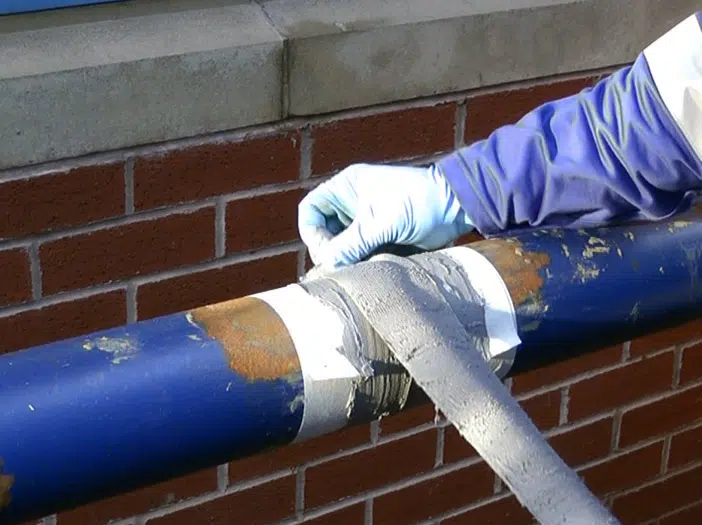Most of the time, we do not expect any problems with home plumbing to occur. You have nothing to worry about until an unexpected water leak. Usually, it is extremely hard to notice a problem before it becomes too huge to cope with yourself. In this article, we will make you familiar with some life hacks that will make your everyday life easier. Every apartment owner should know how to detect that something is going wrong and may soon cause a water leak and how to fix the problem without wasting money on instruments for repairing and plumber calls.
The easiest way to check if there is a problem with the pipes that you have not simply noticed is to read your meter. Take a moment to do it for the first time and then read a meter after a few hours. Do not use water during this time period. You will see if some water has been wasted without you turning it on. If the numbers on the meter have changed, it means that something went wrong and there is a leak that must be eliminated.
Another option, how to discover a water leak, will suit those who do not mind spending some additional money to prevent a major problem. All you should do is purchase a water leak detector that will notify you when there is a problem. You will get a message about the problem, and it will not take a lot of time for you to indicate the place of the leakage and arrange a meeting with a plumber on time.
Before we dive into repair methods, it’s crucial to recognize the early signs of water leaks. Common indicators include:
Modern pipe leak solution options have evolved far beyond simple visual inspection. Professional plumbers now use advanced technology to pinpoint exact leak locations:
When dealing with main line issues, several professional repair options are available:
For minor leaks, homeowners can often perform repairs themselves. Here’s a systematic approach to leaky pipe repair:
We have prepared a list of instructions for you on how to handle the most popular problems.
An advantage of pipes made of plastic or PVC is that homeowners can solve the problem by themselves. Sometimes it takes more time to discover where the problem came from than to find a solution. It is crucial to examine the dripping pipe precisely and to understand where the leakage has started (is it a problem with the place of the joint or one particular pipe that had burst for some reason). After having done this, do not forget to turn off the water first to dry the pipes completely. But there is one quick solution that needs no effort. Just use epoxy or silicone tape to prevent further leaking. It might not eliminate the leak forever, but it will definitely give you enough time to arrange a meeting with a plumber;
If you have some pipes running underground within the territory of your house or garden, you should know in advance how to eliminate the leakage there, too. One day you may notice some puddles in your garden, or the ground becomes wet for no visible reason. Those are signals of a leaking pipe. The reason for the leakage may be temperature drops, an expired service period, or other cases. Unfortunately, it is extremely hard to reach the pipes underground and to find the leak source. When there is a possibility of an underground leakage, the optimal solution is to get help from a specialist;
You can start repairing the leakage using the same suggestions described in the section about pipes made of plastic. If there is no doubt that the issue occurred because of the joint, stop the water flow and try to fix this particular place. If you have required equipment such as tools for cutting and putting the pipes together again, you are able to remove the pipes and make an area of the joint more solid. If you are not sure about your abilities to handle this work, use the same short-term solution (a silicone tape or epoxy).
Some leaks require immediate professional plumber water leak repair services:
Understanding typical repair costs helps in budget planning:
Prevent future leaks with these maintenance practices:
Contact a licensed plumber when:
A: Call a professional if you notice consistently high water bills, water stains, or if DIY repairs don’t hold.
A: Age, corrosion, high water pressure, and temperature changes are the most common causes.
A: Water main issues should be addressed immediately to prevent property damage and water waste.
A: Professional assessment is recommended as older homes may require specialized techniques and materials.

Repairing this kind of leak may seem to be unpleasant and even disgusting work. However, not in all cases will you have to deal with already used water from the toilet. The issue might occur in different places because of a variety of reasons. Therefore do not fear a simple check. A professional would be happy to do the rest of the tasks for you.
For instance, you should not have stress if you once notice a floor around the toilet bottom becoming wet. The leakage can be repaired easily. The problem might occur because of the rubber seal put badly or the bolts that have loosened since the toilet installation. You have an opportunity to eliminate this kind of leak effortlessly.
Another reason for a dripping toilet may be damaged surface or details. For example, there may be cracks inside and outside of the bowl. The right decision will be to throw out the toilet and purchase a brand new one. Additionally, the float and the ballcock can be damaged. As a result, the cistern will be filled constantly, and there will be an overflow. A specialist would advise you whether it will be more sufficient in terms of money and time to buy a new toilet or to repair the old one.
Probably the biggest fear of all homeowners is the leakage from the toilet bottom. You can define this problem judging by the quality of the flowing water. If it does not look clean, it means that it comes straight from the toilet. In that case, you have to stop using the toilet instantly. It may be rather hard to solve the problem on your own. Having an adjustable wrench is a must. You also need to know how exactly to set the toilet. Prepare a sanitizer of a disinfector for dealing with the leak;
A bathroom is a place where it is always wet. That is why it is so tough to ensure sealed joints for a long time. It might be helpful to check once in a while the overflow waste, the plughole, and the pipes that connect the water supply to the tap in the bath or shower. To do that, it might be needed to remove the side panel of the shower or even the tiles if the pipes are hidden inside the wall.
In addition, a silicone seal can slowly start to let water through. It may not be noticeable at first sight, but it can be a leak under the shower or the bath that you usually do not see. To fix it, you can remove the old seal and do it again more precisely.
Usually, the most common problem is a dripping tap. Almost everyone has been annoyed by constant noises of drops falling in the sink at least once in their life. There is no general reason for that. The issue can occur because of the flap that has been tightened too hard or if someone constantly leaves a tap open, not switching it off completely. Deterioration can be a reason, too.
To solve the problem start by switching off the water (use an isolator valve or the stopcock) and taking off the tap. You have to examine it precisely and try to find the cause of a leak. One of the reasons for leaking may be a blockage because of the rubbish stuck in there. You may clean a tap by yourself. Do not be afraid to break something, and you will not make it worse for sure. However, there might be another problem that is not as easy to solve. If you notice damage, it will be worth replacing a washer. If you feel like you cannot handle it, call a plumber for whom it will not take long to replace the washer.
Moreover, a radiator can leak at one point and cause some serious consequences such as damaged flooring. The water can even spread to the neighbors’ apartment downstairs, which will be followed by a major quarrel. To avoid that, the leak should be found as soon as possible. When trying to figure out the problem, check if the valve or valve spindle is leaking, examine the pipe joint, and look for corrosion. To fix the problem, you will most likely need to drain the radiator and then feel it with water again. If you haven’t managed to define the source of leaking, it is advisable to call a plumber.
Read our other articles:
1. How to Find a Professional Plumber
2. Top-10 Reasons to Avoid DIY Plumbing
I bring over 9 years of dedicated plumbing experience to the table. As a seasoned professional in the plumbing industry, I've tackled a wide range of projects, from residential repairs to large-scale commercial installations.

